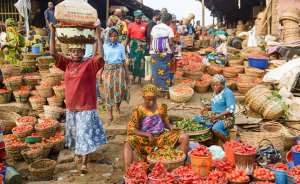The Gombe State Authorities has introduced a plan to generate N39 billion in Internally Generated Income (IGR) to assist its 2026 fiscal yr price range.
The Commissioner for Price range and Financial Planning, Mr. Salihu Baba-Alkali, introduced the goal throughout the public presentation of the 2026 price range breakdown, following Governor Inuwa Yahaya’s earlier presentation of the proposed price range to the State Home of Meeting, the Information Company of Nigeria (NAN) studies.
In keeping with Baba-Alkali, the N39 billion projection—a rise of 19.22 per cent in comparison with the N32.7 billion focused for 2025—is daring however reasonable, notably in mild of the robust efficiency of the Gombe State Inner Income Service (GIRS).
He famous that in 2025, the service not solely met however exceeded its income goal by 103 per cent, even earlier than the top of the fiscal yr.
The commissioner stated the state authorities had strengthened the income service to allow it to fulfill the goal.
In keeping with Baba-Alkali, the IGR will complement different funds wanted to maintain and full the large ongoing tasks within the state.
State authorities commends Inner Income Service
He urged the service to enhance its income assortment information, to spice up the state’s income base and scale back over reliance on federal allocations.
“I commend the Gombe State Inner Income Service for reaching 103 per cent of its whole quantity budgeted to be obtained in 2025.
“I attraction to the great individuals of Gombe to assist the state authorities’s infrastructural growth by willingly and frequently paying their taxes,” he stated.
Heavy Reliance on Federal Allocations and Mortgage Drawdowns
Past IGR, the state authorities expects to obtain substantial federal allocations in 2026.
Baba-Alkali stated the state was anticipating N80 billion from the Statutory Allocation, N65 billion from the state’s share of VAT and N132 billion from FAAC receipts.
He stated the VAT would contribute 25.5 per cent of the anticipated whole income, whereas different FAAC receipts amounting to N132 billion contribute 41.77 per cent of the anticipated whole income.
Baba-Alkali stated the state would externally borrow N186.7 billion, contributing 82.76 per cent of the full capital receipts.
“It is very important be aware that the large sum of exterior borrowing is principally a drawdown from multilateral organisations, which the Federal Authorities borrow on behalf of states.
“These externally borrowed funds are coming primarily from the World Bank and the Islamic Growth Bank,” he stated.
Baba-Alkali reiterated the state authorities’s dedication to lowering over-reliance on federal transfers in the long run.
What it is best to know
Within the newest information launched by the Nationwide Bureau of Statistics (NBS), Nigeria’s 36 states and the Federal Capital Territory (FCT) generated a mixed N3.63 trillion in Internally Generated Income (IGR) in 2024.
The info confirmed that Internally Generated Income (IGR) throughout Nigeria’s 36 states and the Federal Capital Territory (FCT) rose to a cumulative N10.88 trillion between 2021 and 2024.
Additionally, Nigeria’s 36 states shared a cumulative N4.43 trillion from the Federation Account Allocation Committee (FAAC) between January and July 2025, with receipts of oil-rich states accounting for about 35% of whole disbursements.
Knowledge from the Nationwide Bureau of Statistics (NBS) and FAAC studies present that Delta State obtained the very best internet allocation throughout the interval—N361.23 billion—adopted carefully by Rivers (N301.18 billion), Lagos (N279.03 billion), Akwa Ibom (N278.11 billion), and Bayelsa (N274.81 billion).







Be First to Comment